
Department of Mathematics and Statistics, University of Melbourne
Peter Hall is a leading international researcher in theoretical and applied statistics and probability theory. He has made substantial contributions to nonparametric statistics over a 25-year period. Peter has had a massive influence on the development and assessment of the bootstrap method. He has made very important contributions to smoothing methods in statistics, and has introduced practical smoothing parameter-selection methods in a variety of settings. He also developed novel theoretical arguments to explain why some approaches are more variable, or more biased, than others. Peter’s research on fractal-based statistical methods for quantifying surface roughness has also been groundbreaking.
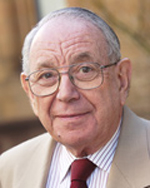
Professor Emeritus, School of Molecular and Microbial Biosciences and School of Chemistry, University of Sydney
Hans Freeman has made distinguished contributions to science through the study of the crystal structures of biological coordination compounds including metal-peptide complexes and metalloproteins. He introduced the use of computers for crystallographic calculations to Australia, and his laboratory was the first in the southern hemisphere to determine the crystal structure of a protein, plastocyanin. He has been a selfless advocate for macromolecular crystallography; a recent example is his membership of the Policy and Review Board of the Australian Synchrotron Research Program. He was the Foundation President of the Society of Crystallographers in Australia.
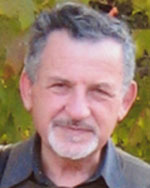
Professor Emeritus, School of Mathematics and Statistics, University of Sydney
Eugene Seneta has done much seminal work in probability and statistics in connection with branching processes, the history of probability and statistics, and in such diverse areas as slowly varying functions, Bonferroni type bounds on probabilities of unions of sets, on modelling of the price of a risky asset, and in the scaling of Higher School Certificate marks. The implications of some of his research are considerable. The algorithm which Eugene produced for scaling Higher School Certificate marks in the early 1980 was later used to determine the New South Wales Tertiary Entrance Rank.
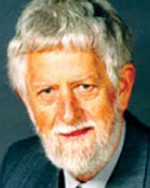
Professor Emeritus, Research School of Earth Sciences, Australian National University
Ian McDougall has an extraordinary record of scientific achievement in the fields of plate tectonics, geochronology, planetary noble gas evolution, and the origin and evolution of humans. In addition to making fundamental contributions to plate tectonics by precise dating of the large-scale movement of oceanic plates, his work provides the benchmark for our understanding of hominid evolution in East Africa. This is exemplified by his recent dating of the new species Australopithecus anamensis, a finding that provides new insights into our understanding of the genesis of our own species.
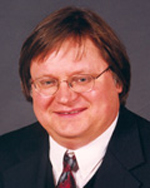
Head, Nonlinear Physics Centre, Research School of Physical Sciences and Engineering, Australian National University
Yuri Kivshar is a world leader in nonlinear physics and optics, widely recognised for his contributions to our understanding of self-trapping and energy localisation, pioneering results in the theory of optical solitons and vortices, and the world-first predictions of many important effects in nonlinear physics of periodic photonic structures. Most of his theoretical predictions have been verified and demonstrated experimentally. Yuri is a leading figure in the interchange of ideas between nonlinear optics and atom optics. His research is multidisciplinary in background and focus.
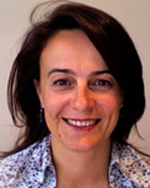
Marseille Oceanography Centre, Laboratory of Oceanography and Marine Biogeochemistry, Marseille
Léanne Armand is the recipient of the 2005–07 European Union Marie Curie Fellowship for her comprehensive taxonomic treatment of Southern Ocean diatoms. She has added rigour to the study of diatoms by applying statistical analysis, increasing the degree of confidence in the reconstruction of sea water temperatures of the past. This has particularly enhanced the value in reconstructing environments during the late Quaternary. The relevance of this type of work is increasing as questions of evolution of our modern environment become more important.

CSIRO Plant Industry, Canberra
Peter Dodds is an exceptional and highly creative young researcher in the area of the molecular biology of host-pathogen interactions, specifically the interaction between the flax plant and its flax rust pathogen. He has isolated several genes from flax related to resistance to rust, providing insights into the evolution of these genes and the molecular basis for the specificity of plant-pathogen interaction. He has also isolated the first rust pathogen avirulence genes and developed a general method for isolating and recognising these genes. These discoveries have provided a route towards engineering new rust resistance genes for use in agriculture.
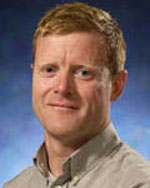
Australian Research Council Federation Fellow, The Department of Biochemistry & Molecular Biology, School of Biomedical Sciences, Monash University, Melbourne
Jamie Rossjohn’s primary contribution is to provide a structural basis for events central to infection and cellular immunity. He has provided insight into the mechanism of action of the cholesterol-dependent pore-forming toxins and a toxin that inactivates an essential chaperone protein. Jamie has provided an understanding of receptor-recognition events at the immunological synapse. This includes providing insights into the basis of MHCrestricted antigen recognition, T-cell immunodominance, allorecognition and signalling, and also MHC polymorphism in the context of antigen presentation and viral evasion.
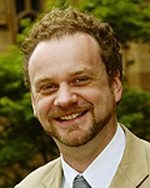
Federation Fellow and Professor of Chemistry, University of Sydney
Thomas Maschmeyer is renowned for his ground-breaking research in materials and catalysis which led to his meteoric rise in stature within the international chemical community. His guiding principle of ‘selectivity tuning by active site design’ underlies his discoveries from pharmaceutical synthesis to process intensification and biofuels. Thomas’ leading role in the establishment of the combinatorial catalysis company Avantium was instrumental in the listing of the Australian Biodiesel Group on the Australian Stock Exchange.
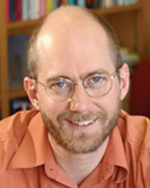
Professor of Statistics, Department of Econometrics and Business Statistics, Monash University, Melbourne
Rob Hyndman has made major contributions to a wide range of fields, especially to forecasting, time-series, graphical methods and computational statistics. His research in forecasting challenged the appropriateness of the most fundamental of Bayesian forecasting models for exponential-family time series and on state-space models for exponential smoothing. Rob has recently proposed a new methodology for forecasting age-specific mortality curves and all official Australian cancer forecasts now use this method. His research on graphical methods has produced an ingenious method for visualising conditional probability densities, and a remarkably useful tool for data analysis – the ‘highest density region’ box plot.
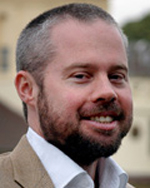
Professor of Physics, ARC Federation Fellow, Research Director, CUDOS – ARC Centre of Excellence, School of Physics, University of Sydney
Ben Eggleton has pioneered research in optical device physics and photonics that underpin the development of the next generation of communication technologies and has made seminal contributions leading to the development of the photonic chip. His research achievements include the first experimental observation of nonlinear pulse propagation in photonic crystals, ground-breaking work on geometries for photonic crystal fibres, and the demonstration of highly original and significant nonlinear waveguide.
© 2026 Australian Academy of Science